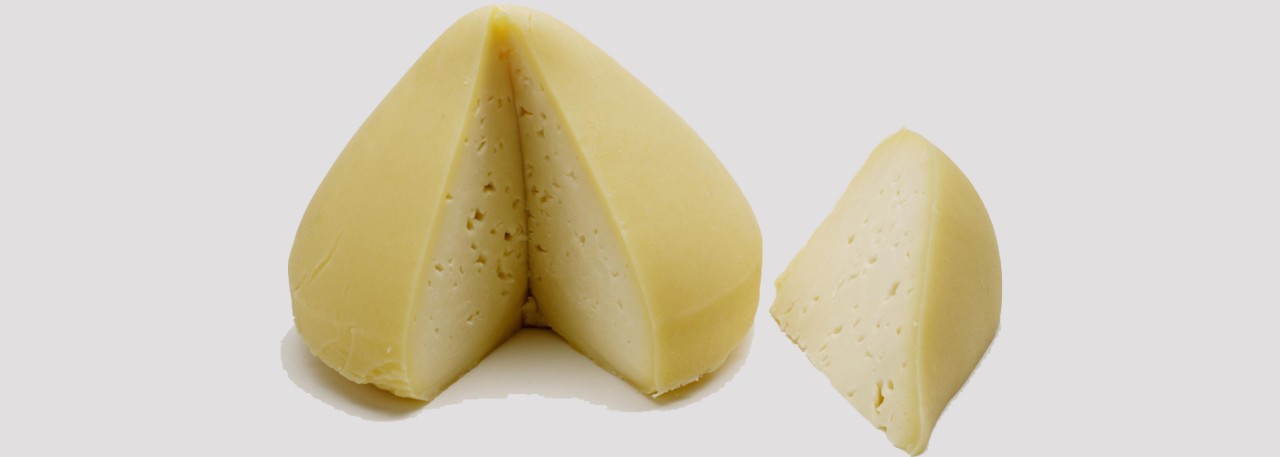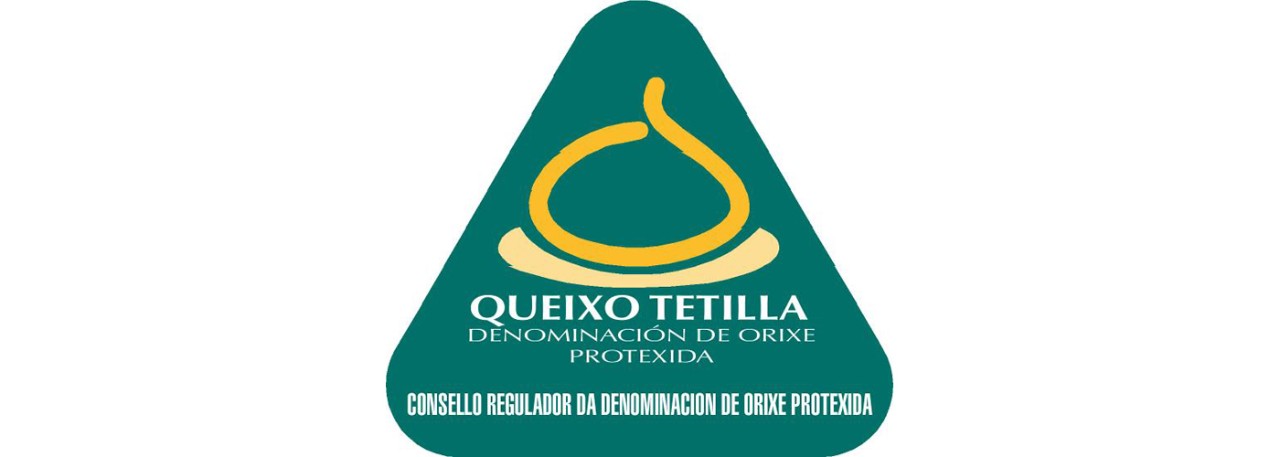.png.transform/rendition-xs/image_image%20(1).png)
Queso Tetilla PDO
Matured cheese, from fresh to semi-cured, ripened for a minimum of eight days, made from whole milk from Friesian, Swiss Brown and Galician Blonde cows fed by traditional techniques.
Tasting notes
The aroma and flavor are reminiscent of fresh cows’ milk and/or butter. The flavor is mild, not pungent, without acidity or excessive bitterness, and may include touches of vanilla and walnut as well as light notes that are not present in the aroma. This may lead to a smell of cream, vanilla and walnut. The cheese has high deformability and adhesiveness, medium creaminess and solubility, light elasticity and friability in the mouth, light granularity, medium moisture and medium to high fattiness.
Other notes
The shape is well-proportioned conical, concave-convex, with a slight nipple at the top and more or less pointed, and the rounded or straight bottom edge should not measure more than ¼ of the height. Both the height and the diameter may measure 9-15 cm, and the weight may vary from ½ to 1½ kg (1.1-3.3 lbs). The rind is natural, smooth or slightly reticulated, fine and elastic, less than 3 mm thick, and has no mold. The color is even, varying from ivory in very fresh cheeses to yellow, with the lightest color on the underside and possible markings from the tray.
The paste is even and compact, with medium creaminess or slight friability, the color is ivory to pale yellow, with no holes or very few. Any hole must be no larger than a grain of rice.
The cheese must have the following physical and chemical characteristics:
Fat over dry matter: 45% minimum.
Dry matter: from 45 % minimum.
pH: from 5 to 5.5 when sold.
Production / Processing method
The cattle must be fed in the traditional way, and one of the objectives of the Regulatory Council is to promote direct grazing.
Transport must be carried out in the best possible conditions of hygiene, either in insulated or refrigerated tankers, or any other method guaranteeing that the quality is not affected.
The milk must be free from colostrum, preservatives and drugs.Coagulation is carried out at 30-34ºC (86-93ºF) using an animal rennet extract, or other expressly authorized coagulating enzymes and lactic starters: Lactococcuslactis subsp. lactis, Lactococcuslactis subsp. Cremoris and any other that does not modify the characteristics of the cheeses to be protected and that is expressly authorized for the elaboration of this cheese. The right amount of rennet must be used so that coagulation takes no less than30 minutes and no more than 60. The resulting curds are then cut to chikpea size, then some of the released whey is removed and optionally washed in fresh water to bring down the acidity to 4-6º Dornic.
Finally, the curds are molded to the right size and shape, and pressed for a required time. The cheeses can be salted in bucket and/or submerged in brine (24 hours maximum).
The PDO cheeses must be ripened for a minimum of eight days from the day after processing, during which period they are turned and cleaned so that they acquire the necessary characteristics.
It is not permitted to use any type of casein product, powdered milk, any type of fats including butter, illegal additives or legal additives that have not been expressly authorized by the Regulatory Council.
The cheeses may not be manipulated in any way to alter the rind, which must retain its natural appearance and color. The PDO cheeses are identified with a label and numbered back-label issued by the Regulatory Council. The labels of the different producers must clearly state the name of the PDO.
Geography / Relief and climate
The region of Galicia is located in the north-west of the Iberian peninsula. Owing to its position on the westernmost tip of the European Atlantic arc, it forms a geographical crossroads where different ecological domains interact – a north-south, climatic and topographical component, and a west-east component opposing maritime lands against inland areas. The difference between the north and south is more marked regarding climate and also, therefore, soils and vegetation.
In spite of belonging to ‘wet Spain’, Galicia’s latitudinal position causes it to differ from other regions on the Cantabrian sea, making it more similar to sub-tropical Atlantic climates. In fact, it is a transition climate – oceanic in the north, and sub-oceanic in the south. The former is rainy and temperate, with rainfall reaching a peak in winter and a minimum in summer, when there is a degree of drought. The sub-oceanic climate, which is characteristic of the Baixo Miño ria around Vigo and Orense, has a more marked summer drought period with at least two dry months (July and August), plenty of winter rainfall and higher average annual temperatures.
The combination of a rainy climate with Paleozoic rocks has given rise to the formation of acid, under-developed soils which, in general, are of limited usefulness. In fact, poor soils predominate in Galicia, with fertile areas being located in clearly-defined parts, generally at the base of valleys and depressions or along the coast.
However, the high rainfall and mild temperatures lead to lush ground cover, and cattle-rearing areas tend to be located in peneplains where moist brown soils are to be found on siliceous materials. The relief and heavy rainfall have formed the river network, with the Navia, Eo, Oro, Landove, Sor, Esteiro, Dola, Baleo, Mayor and Mera rivers along the Cantabrian north coast, and the Tambre, Ulla and Miño rivers, the longest and largest, on the Atlantic coast, where there are also other smaller rivers such as the Eume, Mandeo, Aliones, Mira, Umia, Lérez, etc. which flow into the rias, both the Rias Altas and the Rias Bajas. Mention should also be made of the Támega in the south-east of the region in the province of Orense, which does not belong to the northern basin but to the Duero river basin.
Dairy cattle farming uses both natural and cultivated pasturelands, and even scrub. There is a wide range of plant species, giving an average yield of 25-30 tons of green pasture per hectare (2.471 acres) per year. In the province of Lugo, corn, beetroot and turnips are also grown for forage.
Regulatory Council
Consejo Regulador de la DOP Queso Tetilla
Pazo de Quián - Sergude
15881 Boqueixon (A Coruña)
Galicia
Tel: (+34) 981 511 751
info@queixotetilla.org
www.queixotetilla.org
Sources:
- Spanish Ministry of Agriculture
The shape is well-proportioned conical, concave-convex, with a slight nipple at the top and more or less pointed, and the rounded or straight bottom edge should not measure more than ¼ of the height .


- Tetilla 1
- Tetilla 2

Boqueixon -A Coruña (Galicia)
